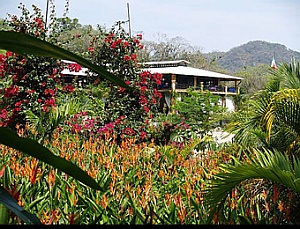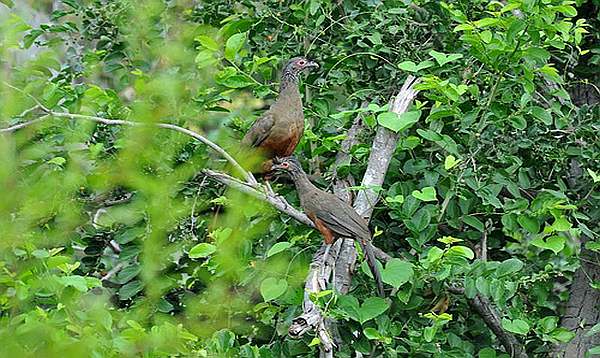Puerto Vallarta, Mexico - What is a Chachalaca Mexicana? It sounds like it could be an upbeat Mexican version of that famous dance of Cuban origin. Or perhaps is it a tall, decadent tropical drink that is chugged and found at upscale Mexican beach resorts like Puerto Vallarta or Mazatlan? Or could it be the most recent addition to Taco Bell’s not so upscale menu? No, there would be nothing truly Mexican about that! Yet, there is nothing more Mexican than a Chachalaca Mexicana.
Chachalacas Mexicanas, known in English as West Mexican Chachalacas, are a rather ungainly and peculiarly behaving large bird that is endemic to Mexico. They only occur in the western pacific slope of the country from south and northeastern Jalisco down to southwestern Chiapas.
The first time I saw West Mexican Chachalacas was on the coast of Oaxaca, about an hour east of Puerto Escondido. Myself and the small tour group that I was traveling with had just finished admiring (ok, we were "oohing" and "aahing" as we all superficially adored "pretty - pretty birds") both an elegant-appearing and gorgeous citreoline trogon and, perched on the same tree, a cuter than cute pair of russet-crowned motmots that, atypically, were seen preening and nuzzling each other.
Then, about 30 feet away in the periphery of a nearby wooded area, we heard some loud rustling in the branches. When we turned and looked across the path and saw two chachalacas not so daintily moving from branch to branch.
 |
| West Mexican Chachalacas are plentiful at the Vallarta Botanical Gardens |
Although they may look like turkeys, these not so lovely birds are not part of that fowl family. Rather, as they are relatives to guans and curassows, members of the cracidae family. In addition to being mostly nondescript in color, like other cracids they have longish necks, long broad tails, fowl-like bills, and long, relatively stout legs.
Not exactly a "lovely" bird, they are definitely a behaviorally interesting one. West Mexican chachalacas are loud, raucous and very social. They typically live in groups of up to ten, and they often travel and feed in pairs.
Rarely seen on the ground, they prefer to move from branch to branch and tree to tree within the forest canopy as they search for food. Their diet consists primarily of vegetable matter such as leaves, fruits, seeds, and flowers. Occasionally they may eat insects, small reptiles, small rodents, or frogs. In order to obtain necessary minerals and salt, they will also eat soil.
Their normal habitat is subtropical or tropical deciduous and semi-deciduous forests, from sea level up to around 2400 meters/7900 feet. Along the coast, they are often in dense mangroves and palm plantations. Dating back to pre-Hispanic times they have been, and continue to be, hunted for food, particularly in the highly indigenous states of Oaxaca and Chiapas, where they are a regular part of the local people's diet.
Fairly widespread and numerous, their conservation status is that of "least concern species"- their greatest threats being from habitat destruction and poaching.
Perhaps the West Mexican chachalaca’s most distinctive behavior is their vocalizations. Their voice is gruff and throaty. This species of chachalaca produces a rhythmic chattering of chur-uh-uh-uhr, or sometimes a longer series consisting of kahrr-ahrr-ahrr-ahrr-ahrr-ahrr. They are very noisy "group singers," especially at dawn and dusk.
Editor's note: Chachalacas sound like rusty machinery and, when hearing this bird's vocalization for the first time, watchers are often quite confused by the sound, not believing it comes from a bird. At the Vallarta Botanical Gardens, where there are many of them, whenever Curator Bob Price holds a staff meeting, the chachalacas gather and compete loudly for air time.


